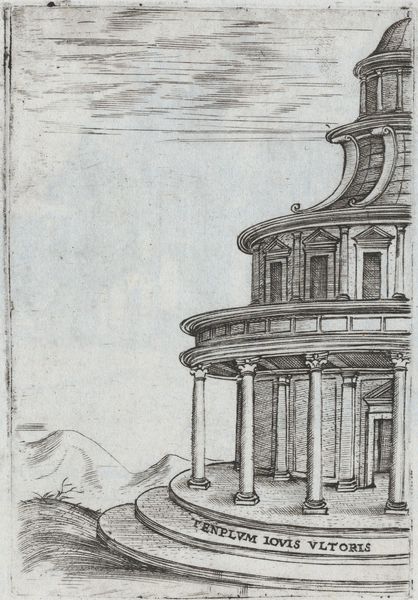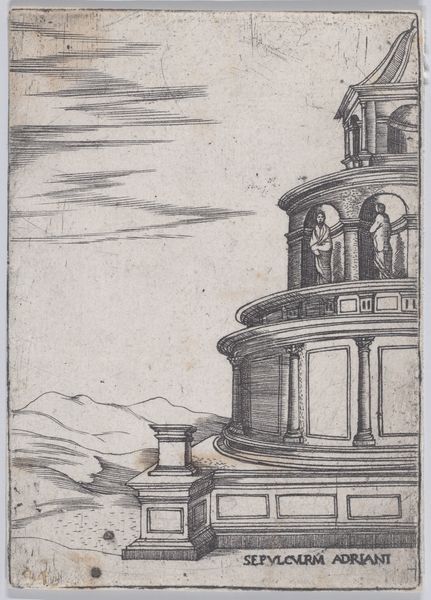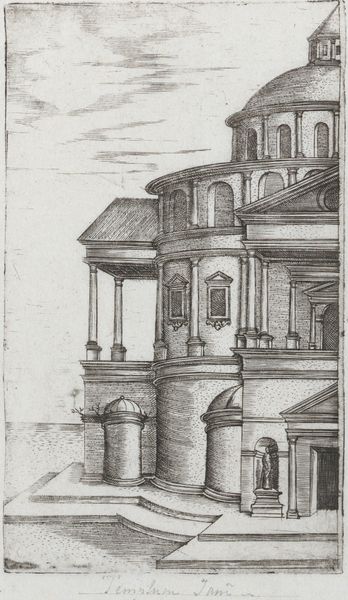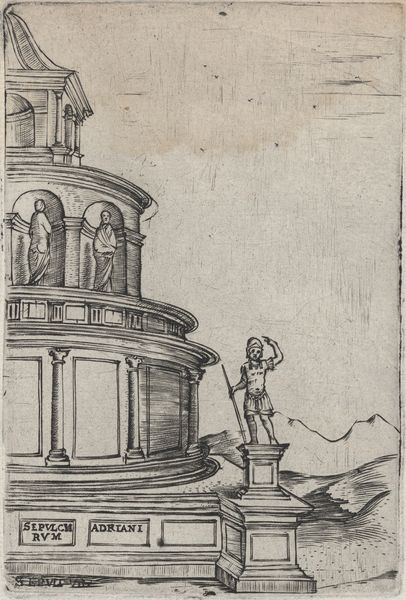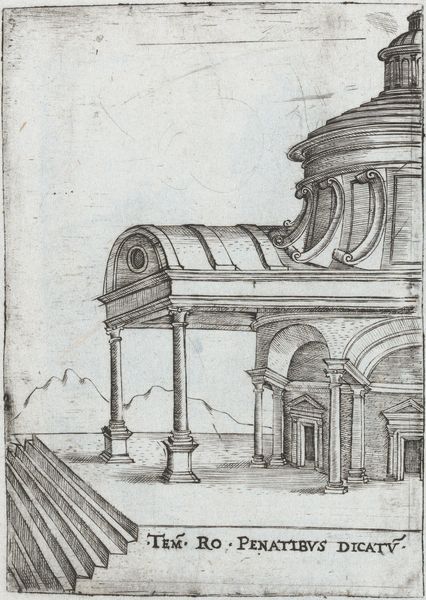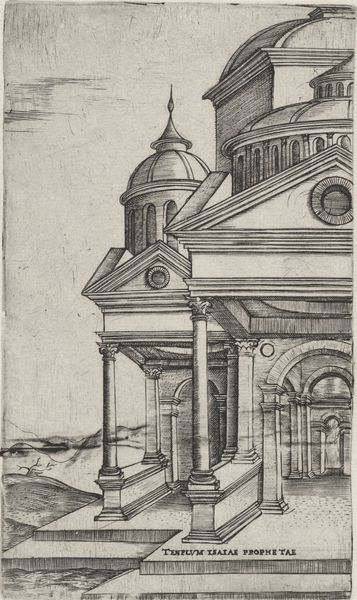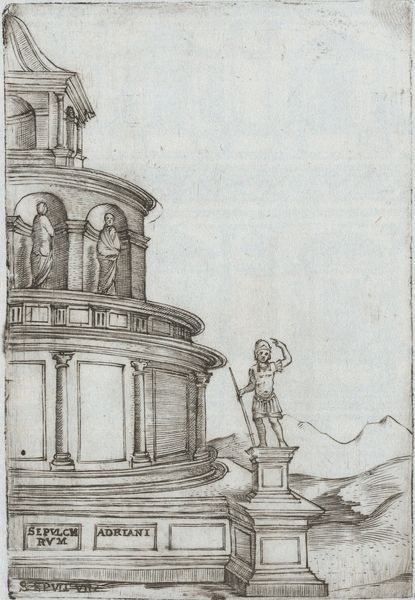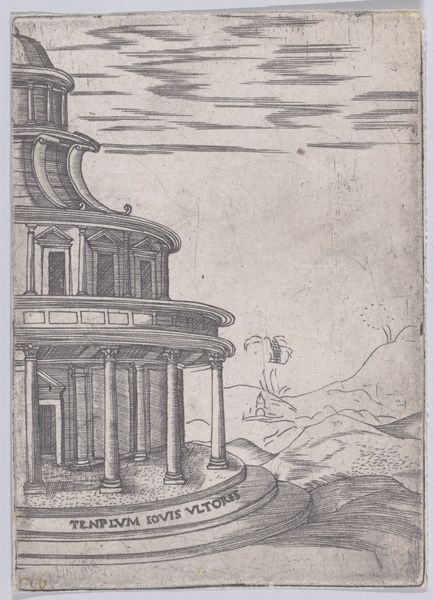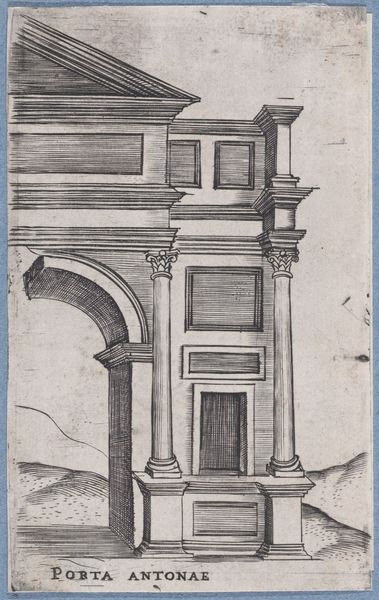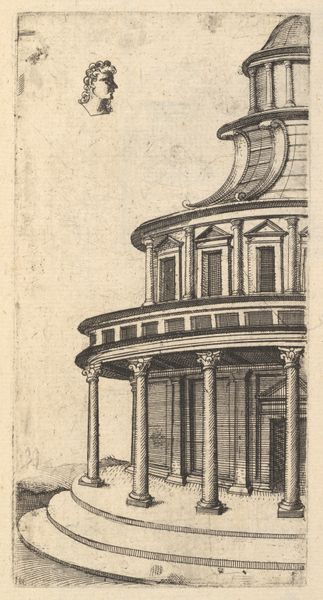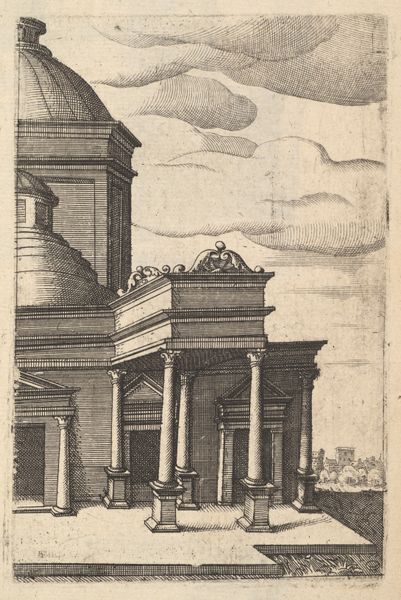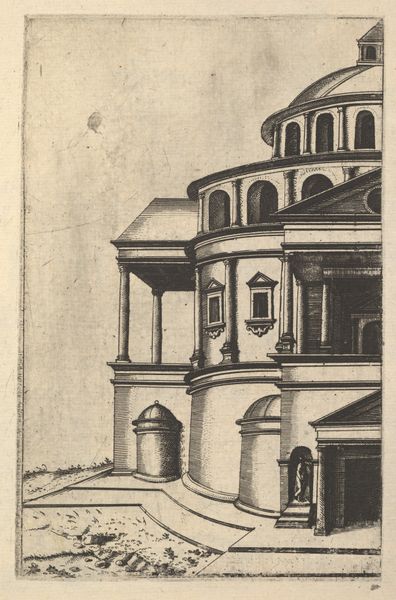
Tenplum (sic) Iovis Ultoris, from a Series of 24 Depicting (Reconstructed) Buildings from Roman Antiquity 1530 - 1550
0:00
0:00
drawing, print, engraving, architecture
#
drawing
# print
#
11_renaissance
#
geometric
#
line
#
history-painting
#
italian-renaissance
#
engraving
#
architecture
Dimensions: Sheet: 13 3/8 × 9 5/16 in. (34 × 23.6 cm)
Copyright: Public Domain
Editor: This is *Tenplum Iovis Ultoris, from a Series of 24 Depicting (Reconstructed) Buildings from Roman Antiquity*, created sometime between 1530 and 1550. It's an engraving, so a print made from an incised plate, showing an imagined Roman temple. It’s incredibly detailed, almost architectural in its precision. What strikes you most about this print? Curator: Well, considering this work, and really any work, I focus on its production. Look at the lines – meticulously etched to create this vision. Think about the engraver’s labor. Not just the artistic vision, but the sheer physical effort. It makes me consider the relationship between artistic skill and craft. Who was this “anonymous” artist, and what was their social status? Editor: I see what you mean. It’s easy to get lost in the romanticism of ancient Rome, but it’s a really good reminder to consider how art comes to *be*. How does the material process intersect with the subject matter, the temple? Curator: Precisely! The choice of engraving, a reproducible medium, makes it accessible. This challenges traditional high art, connecting with a potentially wider audience who might never experience Roman architecture firsthand. It asks, who *consumes* antiquity, and how? Was this intended as an academic tool, or a celebration of a lost empire that might inspire political ambition? What effect might its repeated printing have on social views? Editor: I never thought about the implications of reproducibility that way. I was focusing on the visual depiction itself, but you’ve helped me realize the process of production and consumption has a vital narrative as well. Curator: That’s the beauty of it! Considering the means by which art is created helps us to ask what are the true means by which art’s overall purpose or ‘effect’ is achieved. What stories were its makers trying to write? What role does labour have in expressing cultural narratives?
Comments
No comments
Be the first to comment and join the conversation on the ultimate creative platform.
